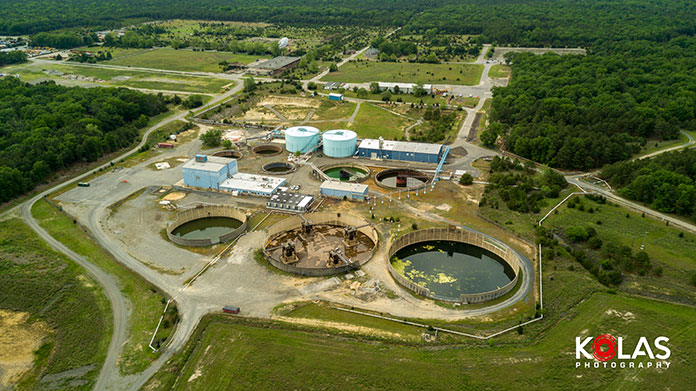
TOMS RIVER – Locals once again publicly voiced strong objections to a proposed settlement agreement that would allow development of property once owned by Ciba-Geigy and deemed a superfund site forty years ago.
The New Jersey Department of Environmental Protection (DEP) conducted the five hour hearings after community members banded together in a public outcry against the proposal last month in a public forum hosted by Save Barnegat Bay.
According to DEP officials, BASF initiated the settlement process for the land it now owns as a result of corporate acquisitions. Ciba-Geigy’s operations on the site resulted in both land and groundwater contamination.
“The goal of natural resource restoration is to ultimately provide equivalent compensation for injuries to natural resources like groundwater, surface water and habitat,” DEP Deputy Commissioner Sean Moriarty said. “It considers the need, the extent, and duration of injury.”
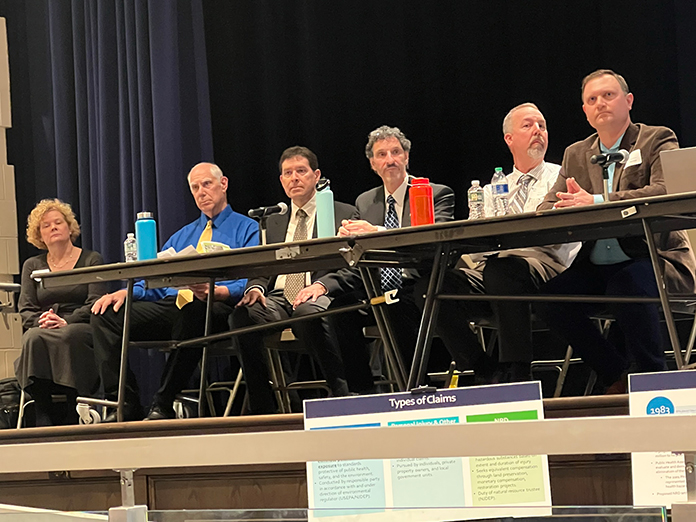
Moriarty expressed how what happened on the site literally hit home for him. His family lived in a small rented house on the border of Route 37 near Ciba-Geigy from 1988-1994. Moriarty recalled hopping Ciba’s eight foot chain linked fence to play football on the property and wasn’t quite sure why it upset his parents so much.
“My father, an entrepreneur and small business owner, worked out of a downtown office next to the River Lady,” said the Deputy Commissioner. “Until he passed from kidney cancer fifteen years ago.”
Moriarty said that he could not advocate for the proposed settlement if he did not personally believe in it. The current plan calls for the permanent preservation of 1,000 acres of developable land at the site of a groundwater injury with nine integrated restoration projects.
BASF would also be permitted to develop 250 acres of the property, a fact that proved alarming to families with loved ones who had suffered illnesses and death that they attributed to the pollution.
A team of DEP officials stressed that the focus was on the restorative value of the property. Authorities believe that the development value of the property is in excess of $200 million and the cost of implementing the restoration projects is approximately $30 million.
Despite Moriarty’s connection to the community and the fact that he ranked second in the DEP, Mayor Maurice “Mo” Hill noted DEP Commissioner Shawn M. LaTourette’s absence from the hearings.
“He wouldn’t just send his troops,” said Hill. “He’d be here with you.”
Hill expressed his disappointment that the municipality was never involved in the natural resource damage assessment, particularly as it applied to the money damages. BASF took the township to tax court regarding its “worthless value” and will now rake in $20 million over the license lease of a solar farm on a portion of the property.
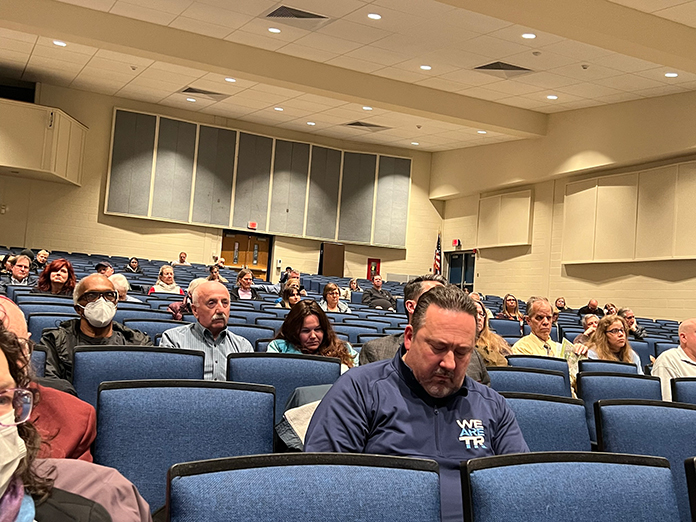
“BASF, just like Ciba-Geigy, is playing us with this settlement,” Hill said. “At the very least, the ‘great deal’ should be amended to deed 250 acres to Toms River as open space for compensation for the environmental and economic damages.”
Community members subsequently backed up Hill’s request, and the Deputy Commissioner agreed to determine if BASF would comply with donating the land as part of the settlement agreement.
Hill and others also suggested that an environmental center proposed for the property should be a learning center to ensure the public understood what led it to become a superfund site.
The Executive Director of Barnegat Bay, Britta Forsberg, pointed out that the settlement agreement calls for three separate plans as far as restoration projects. She also shared her concerns that the public has no calculation or estimation of the natural resource damages.
Forsberg called the energy restoration projects as unrealistic from a legal or scientific perspective. By way of example, she pointed out that calling a preexisting 200 acre solar field a protected conversation zone did not comply with administrative law.
“There is no evidence to support the claim that these solar panels will promote local species,” said Forsberg. “Claiming the northern pine snake will benefit from grass around solar panels, does not work because these snakes live in a forest.”
A number of local residents have used their knowledge and expertise to evaluate the damages caused by the contamination since the issues first began. They expressed their outrage that community members were not invited to participate earlier. Most remained unconvinced that the property should be accessible for any use.
Quite a number of people appeared surprised that BASF itself submitted soil samplings, albeit taken by licensed experts. No one seemed to believe assertions that the results were accurate.
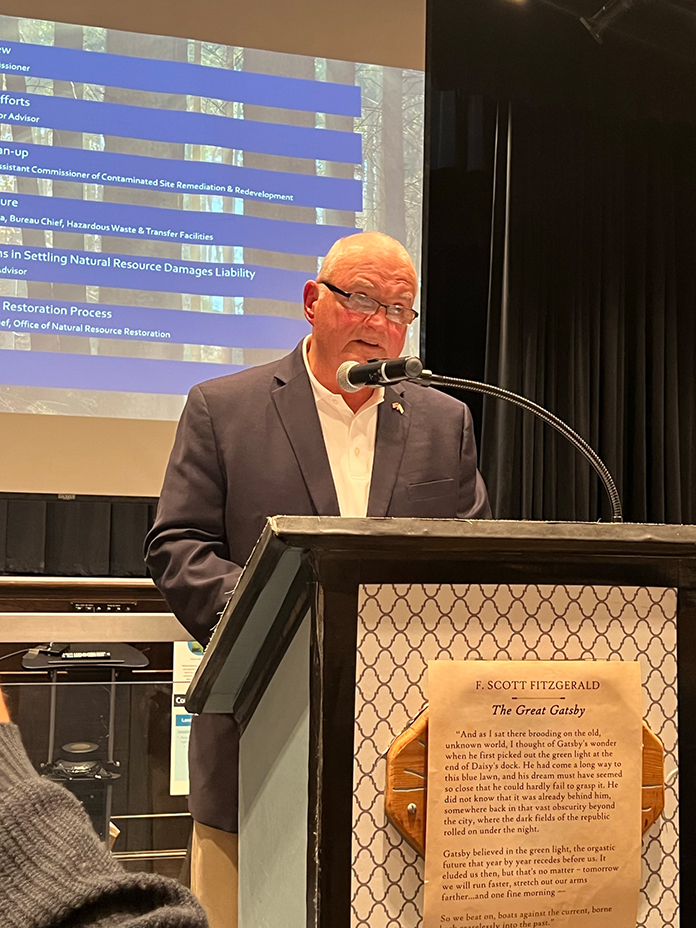
“We’re relying on BASF as the fox in the henhouse,” said William Skowronski of Ocean County Citizens for Clean Water. “To do the sampling, report the test results, and based upon that analysis, determine that the area around the EPA site is clean enough to remedy or become an equivalent for the injured life.”
Several individuals pointed out their personal losses, remembering black sludge, and family members who suffered through cancer. A childhood cancer cluster shook the community.
DEP authorities said the settlement agreement will not impact personal injury claims, including wrongful death claims related to the site’s contamination.
Litigation does not bring back life – nor does the monetary damages claimed in the past. Many fear development on the property could result in more illness and even death.
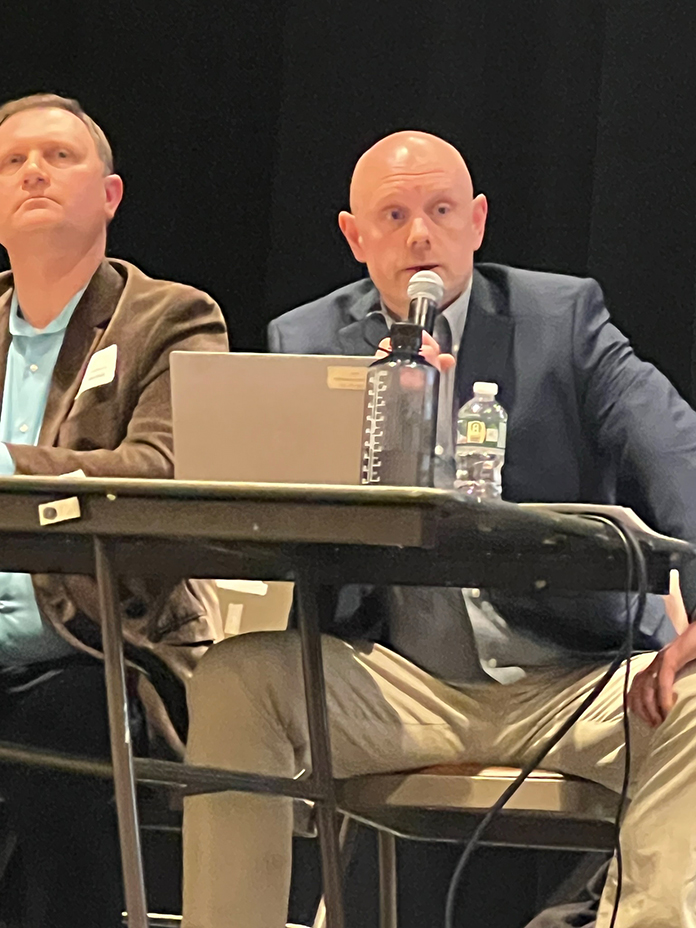
The DEP looks upon the proposed settlement with BASF as less costly than going to court as far as the ultimate outcome of the property. While participants in the hearing pressed for more information regarding the settlement, officials said some details are retained in case the matter proceeds to litigation.
Materials presented at the DEP’s presentation, as well as the proposed settlement agreement can be found here: nj.gov/dep/nrr/settlements/index.html
The DEP has extended its comments deadline until April 5, 2022 by emailing them to onrr@dep.nj.gov and referencing the Ciba-Geigy settlement agreement.





